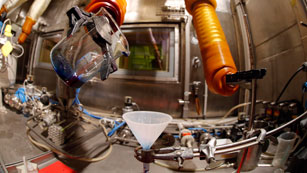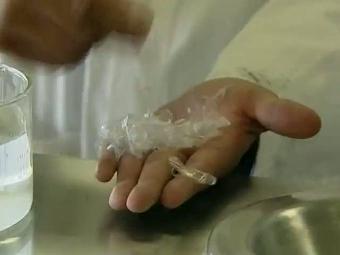 Video
Video  Video
Video class=”hddn
Researchers at the Polytechnic University of Catalonia (UPC) have developed a new catalyst to produce hydrogen clean, renewable and profitable from the water and sun.
research results that have been published in the journal ‘Scientific Reports ‘, opening the door to renewable hydrogen production, must, according to the UPC, so that it becomes the energy of the future.
The invention has been the work of researchers of the Institute of Energy Technology (INTE) of the UPC, University of Auckland (New Zealand) and the King Abdullah University of Science and Technology (Saudi Arabia).
Scientists have fused
optical properties of three-dimensional photonic crystals (inverse opals titanium oxide, TiO2) and gold nanoparticles 2-3 nanometers for develop a highly active catalyst in powder .
As reported
UPC this new photocatalyst produces more hydrogen than hitherto developed because the process takes advantage of the properties of the photonic crystals and the properties of nanoparticles of a metal.
is “put in line” both materials
any fact-based photocatalyst gold nanoparticles and titanium oxide crystals with ultraviolet light, the light excites the electrons of TiO2 and injected into the conduction band, while leaving the other side hole.
A novelty, uses a 3D photonic crystal
news is, scientists use a 3D photonic crystal that retains the visible part of the solar spectrum, so that you can take advantage of not only the ultraviolet part of the solar spectrum, but also the visible, which is the majority , which process performance increases considerably .
According to the inventors, the new catalyst has great potential for application in industrial processes.
Making the move from the laboratory to an industrial plant would, according Llorca, design a reactor to operate outdoors with the sun using a collector Solar (to get more sunlight) .
Currently, a production plant conventional hydrogen from natural gas produces about 300 tons of hydrogen a day and with the new catalyst developed at the UPC, the Researchers have achieved 0.025 liters of hydrogen in just one hour with one gram of catalyst.
arranging eight hours of sun a day, scientists estimate that it would take an area of ??10 by 10 kilometers to produce hydrogen on an industrial scale.
Unlike conventional plants that run on fossil fuels and 800 degrees Celsius, the new hydrogen production system is clean and renewable, as the photochemical process occurs at room temperature and without cost, and energy used sun and water, so that energy and environmental gains are considerable, highlighted the UPC.
The researchers explain that have overcome the target of 5% in the conversion of solar energy into hydrogen at room temperature, which is the threshold at which this technology is considered feasible.
No comments:
Post a Comment